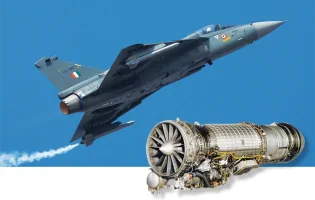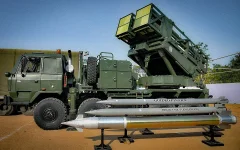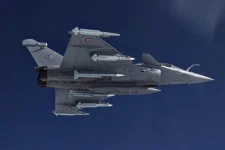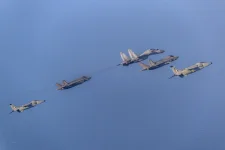Tata Advanced Systems Limited (TASL) has revealed glimpses its latest indigenous armored vehicle, the Advanced Armoured Platform – Tracked (AAP-Tr).
The company recently shared teaser images of the new platform, which is being developed as a primary contender for the Indian Army's high-priority Future Infantry Combat Vehicle (FICV) program.
The FICV program is a major "Make in India" initiative intended to replace the Army's extensive, but aging, fleet of Soviet-era BMP-2 "Sarath" infantry vehicles.
The new AAP-Tr is a significant evolution from the company's successful Wheeled Armoured Platform (WhAP) 8x8, which was jointly developed with the Defence Research and Development Organisation (DRDO).
By shifting from a wheeled to a tracked design, TASL aims to provide a next-generation combat vehicle that combines high survivability with the extreme all-terrain mobility required by the Indian Army, from the deserts of Rajasthan to the high-altitude terrain of Ladakh.
A Proven Foundation
The AAP-Tr is built upon the success of its wheeled predecessor, the WhAP. That 8x8 vehicle, which entered service in 2022 as the Infantry Protected Mobility Vehicle (IPMV), is an amphibious, mine-resistant carrier co-engineered by TASL and DRDO.The platform's robust design has already found success in the international market, securing a major export order for 150 units to the Royal Moroccan Armed Forces. Production for this order is reportedly underway at a new TASL facility in Casablanca, validating the platform's reliability and advanced capabilities.
Why Tracks Matter: A Shift in Mobility
While the wheeled WhAP is highly effective for rapid movement on roads (up to 80 km/h), tracked vehicles historically offer superior performance in sustained, difficult off-road conditions such as deep mud, snow, or rubble.The AAP-Tr is designed to be a "hybrid" solution, retaining the modularity and modern systems of the WhAP but adding the cross-country agility of tracks.
This tracked mobility is considered essential for modern hybrid warfare, allowing the vehicle to keep pace with main battle tanks and operate effectively across diverse and rugged landscapes.
Key Upgrades for Next-Generation Combat
Analysis of the images, reportedly taken during static trials at TASL's Bengaluru facility, reveals a generational shift in design focused on crew safety and combat power. The key enhancements include:- Improved V-Hull Design: The vehicle's underside features a sharper, multi-faceted V-shape. This design is crucial for deflecting blasts from IEDs and mines away from the crew, significantly enhancing protection. The design reportedly improves upon the WhAP's already strong mine protection.
- Advanced Composite Armour: The AAP-Tr features visible layers of add-on composite and ceramic armor panels. This, combined with internal spall liners, provides a higher level of protection, likely shielding the crew from heavy machine gun fire (up to 14.5mm rounds) and rocket-propelled grenades (RPGs).
- Enhanced Survivability: The platform is designed with interfaces for Active Protection Systems (APS), which can intercept and destroy incoming missiles and rockets before they strike the vehicle.
- Superior Mobility: The new tracked suspension gives the vehicle higher ground clearance (approximately 450-500 mm, up from the WhAP's 400 mm). This allows it to cross wider trenches and climb steeper slopes, a vital capability for mountain operations.
- Smarter Ergonomics: The engine has been relocated to the vehicle's left side. This change frees up space on the right for troops to exit the vehicle more quickly and safely, while also improving weight distribution and stability.
- Increased Firepower: The platform integrates a locally developed, remotely operated turret. This is a major upgrade from the WhAP's lighter 7.62mm machine gun, as the new turret can mount a 30mm autocannon and anti-tank guided missiles (ATGMs), giving it "hunter-killer" capabilities.
The Road to the FICV Competition
Development of the AAP-Tr is moving quickly, with the first manufacturing stage (metal-cutting) reportedly starting in April 2025 and prototype demonstrations expected by the end of the year.TASL is positioning the AAP-Tr to compete directly for the Indian Army's multi-billion dollar FICV contract. The program is expected to see stiff competition from other major Indian defence firms, such as Larsen & Toubro (L&T), all aiming to build the next mainline infantry carrier for the armed forces.







